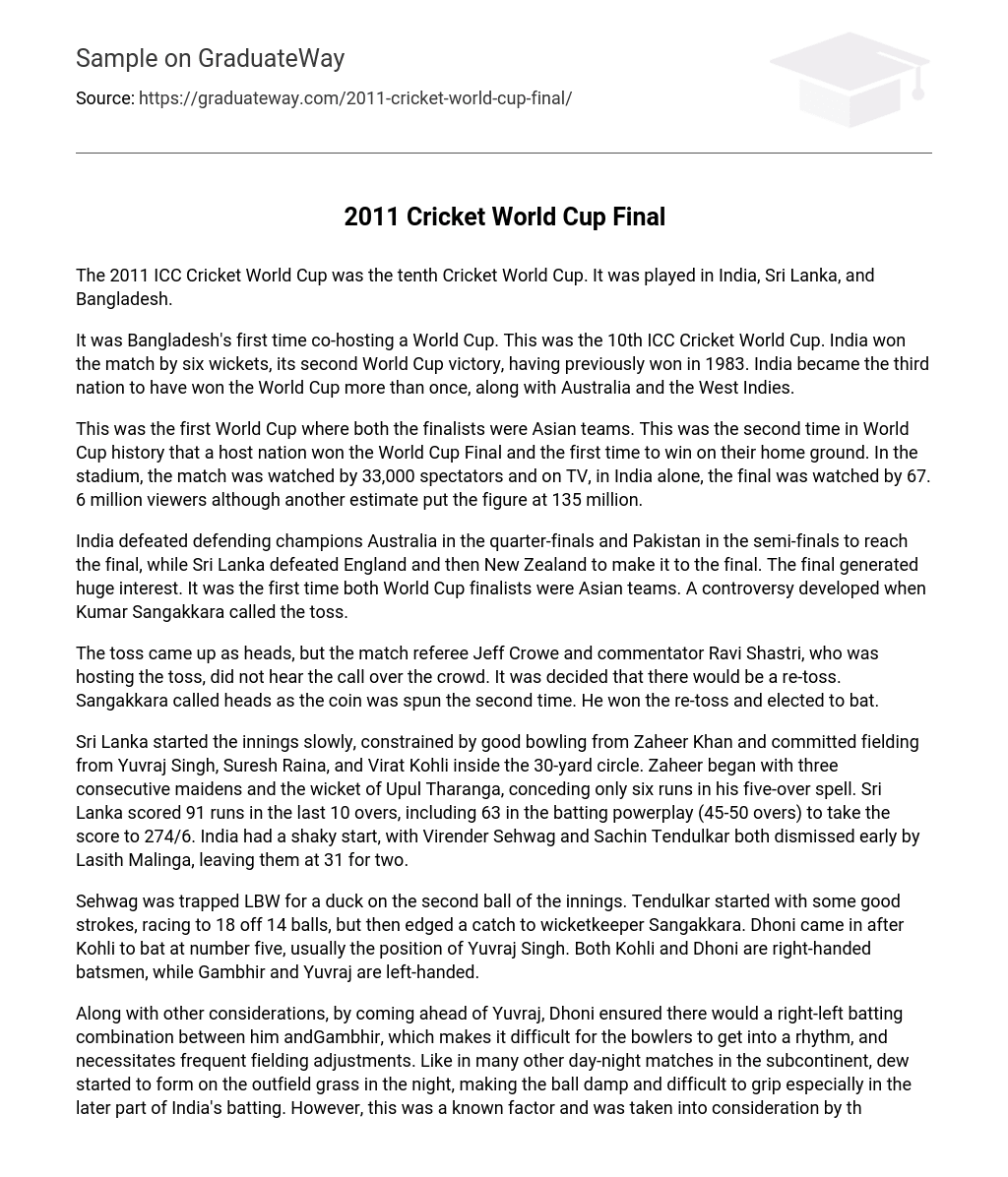The 2011 ICC Cricket World Cup was the tenth Cricket World Cup. It was played in India, Sri Lanka, and Bangladesh.
It was Bangladesh’s first time co-hosting a World Cup. This was the 10th ICC Cricket World Cup. India won the match by six wickets, its second World Cup victory, having previously won in 1983. India became the third nation to have won the World Cup more than once, along with Australia and the West Indies.
This was the first World Cup where both the finalists were Asian teams. This was the second time in World Cup history that a host nation won the World Cup Final and the first time to win on their home ground. In the stadium, the match was watched by 33,000 spectators and on TV, in India alone, the final was watched by 67. 6 million viewers although another estimate put the figure at 135 million.
India defeated defending champions Australia in the quarter-finals and Pakistan in the semi-finals to reach the final, while Sri Lanka defeated England and then New Zealand to make it to the final. The final generated huge interest. It was the first time both World Cup finalists were Asian teams. A controversy developed when Kumar Sangakkara called the toss.
The toss came up as heads, but the match referee Jeff Crowe and commentator Ravi Shastri, who was hosting the toss, did not hear the call over the crowd. It was decided that there would be a re-toss. Sangakkara called heads as the coin was spun the second time. He won the re-toss and elected to bat.
Sri Lanka started the innings slowly, constrained by good bowling from Zaheer Khan and committed fielding from Yuvraj Singh, Suresh Raina, and Virat Kohli inside the 30-yard circle. Zaheer began with three consecutive maidens and the wicket of Upul Tharanga, conceding only six runs in his five-over spell. Sri Lanka scored 91 runs in the last 10 overs, including 63 in the batting powerplay (45-50 overs) to take the score to 274/6. India had a shaky start, with Virender Sehwag and Sachin Tendulkar both dismissed early by Lasith Malinga, leaving them at 31 for two.
Sehwag was trapped LBW for a duck on the second ball of the innings. Tendulkar started with some good strokes, racing to 18 off 14 balls, but then edged a catch to wicketkeeper Sangakkara. Dhoni came in after Kohli to bat at number five, usually the position of Yuvraj Singh. Both Kohli and Dhoni are right-handed batsmen, while Gambhir and Yuvraj are left-handed.
Along with other considerations, by coming ahead of Yuvraj, Dhoni ensured there would a right-left batting combination between him andGambhir, which makes it difficult for the bowlers to get into a rhythm, and necessitates frequent fielding adjustments. Like in many other day-night matches in the subcontinent, dew started to form on the outfield grass in the night, making the ball damp and difficult to grip especially in the later part of India’s batting. However, this was a known factor and was taken into consideration by the Sri Lankan captain when he chose to bat first after winning the toss. By crossing the target of 274, India had set a record for the highest successful run-chase in a World Cup final.





